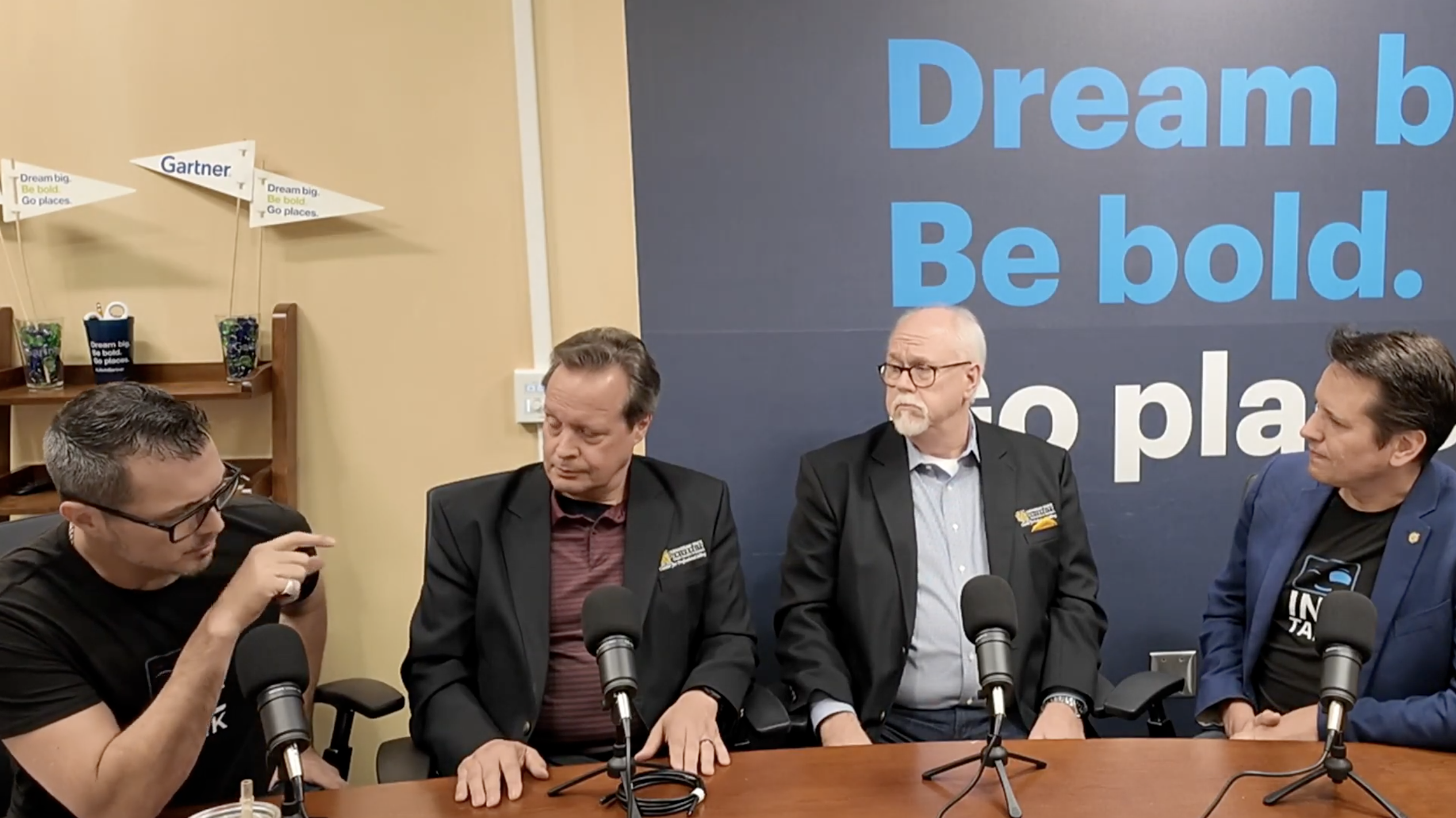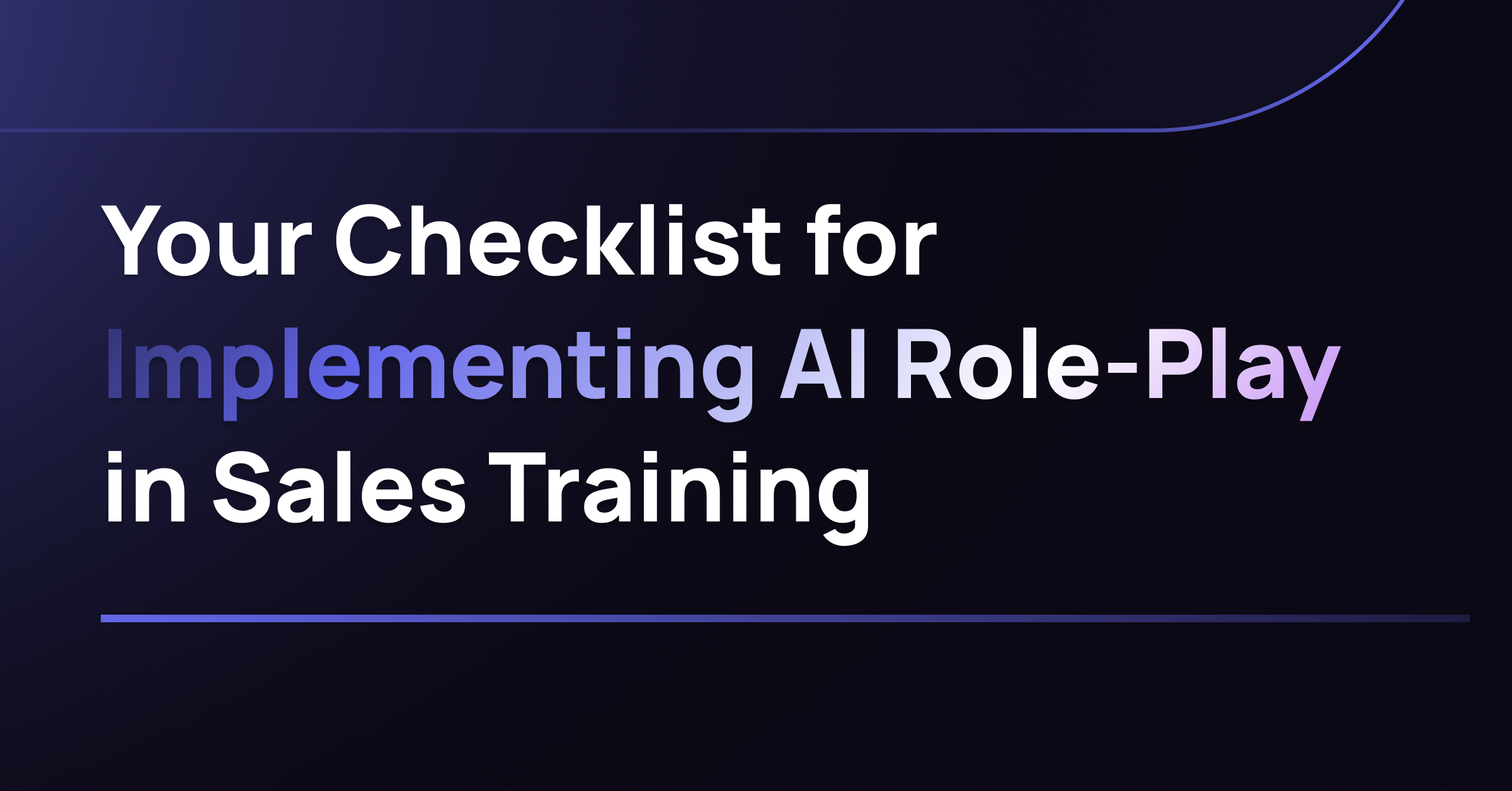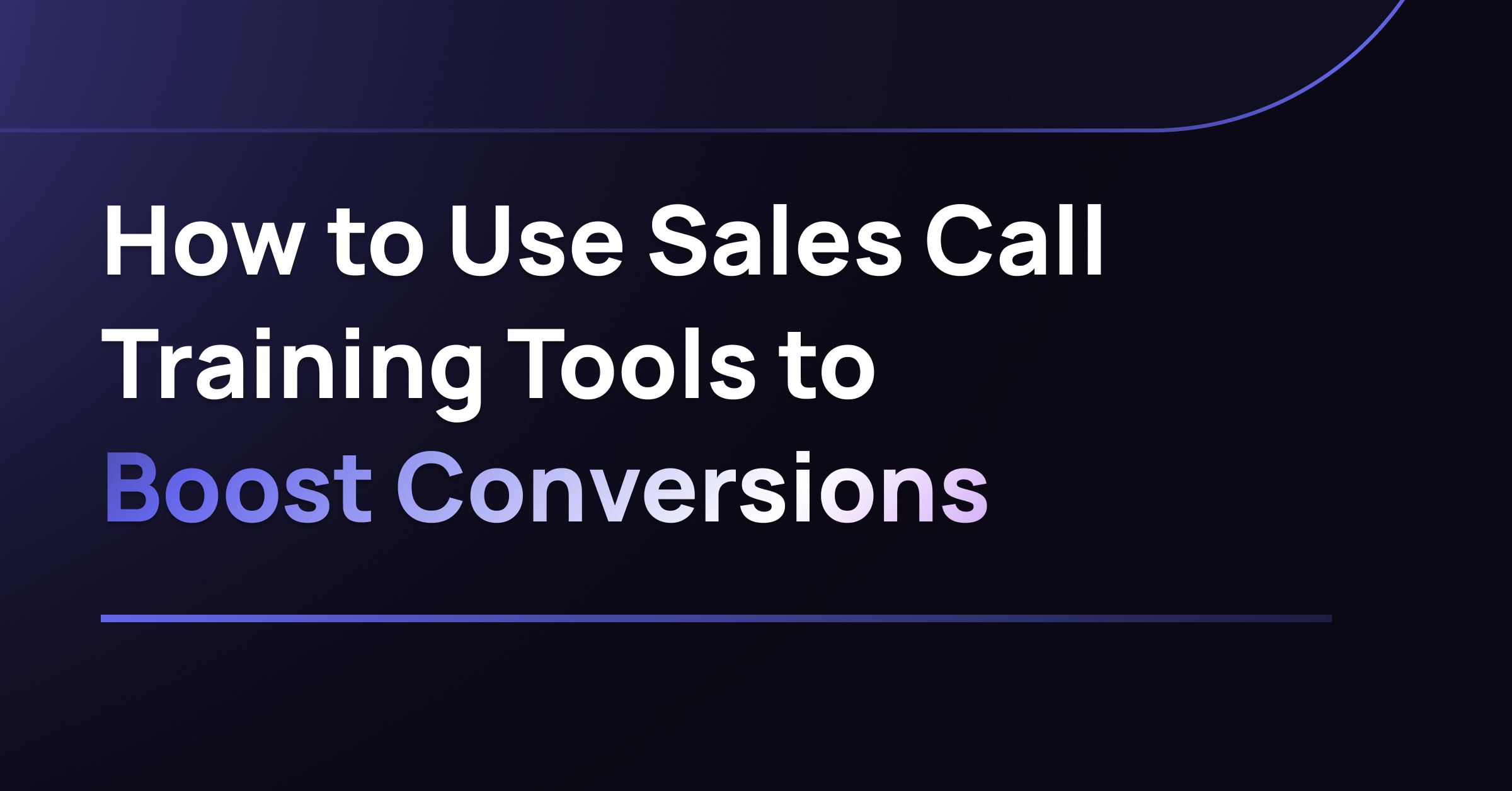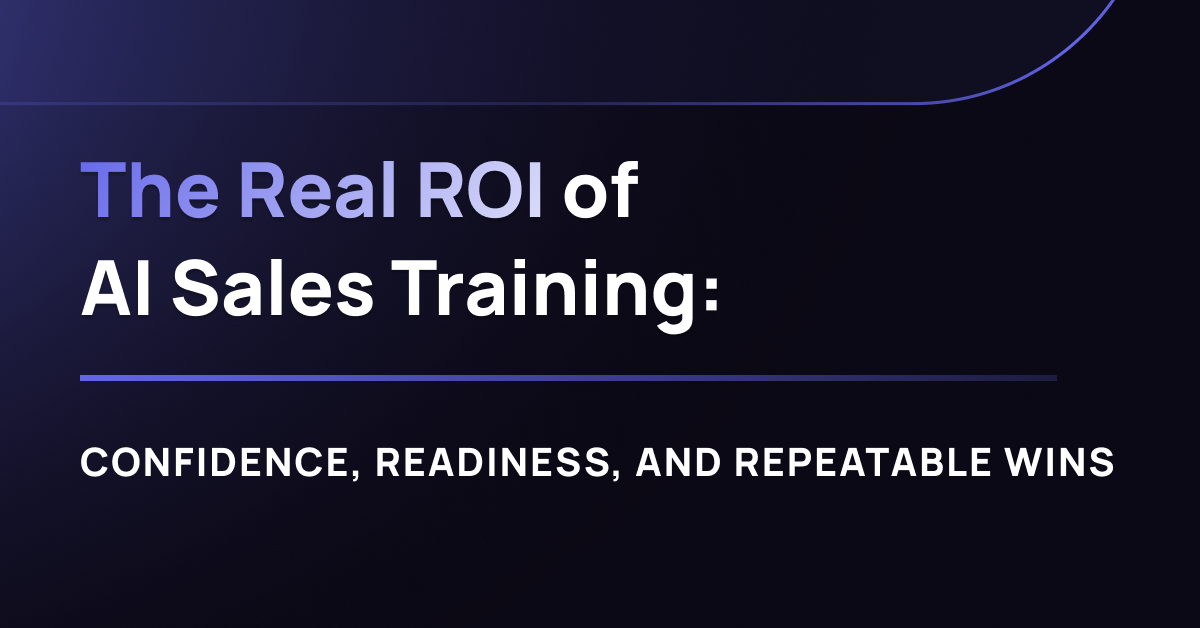Sales tech demos are getting better every year. Smooth UI, impressive dashboards, flashy use of “AI”—it’s easy to get caught up in the show.
But when it comes to AI training tools, the real question isn’t what looks good in a demo. It’s what actually drives behavior change on your team.
Most platforms talk a big game. Few deliver real impact.
Here’s the truth: If you’re serious about performance, you need to ask better questions during your evaluation process.
These five questions will cut through the noise, expose shallow platforms, and reveal the tools truly built for skill development at scale.
1. “How are your role-plays powered? Scripted or Generative?”
If the simulations are scripted, they’re not scalable, dynamic, or realistic. Scripts can’t adapt to rep responses. They don’t mimic real buyer behavior. And reps will game the system—learning the lines instead of the skills.
Look for platforms powered by large language models (LLMs). These deliver unscripted, emotionally intelligent conversations that adjust in real time. Reps can’t memorize their way through them—they have to think, adapt, and sell.
Scripted = predictable = ineffective.
LLM-powered = dynamic = transformative.
2. “Can you align role-play scenarios and evaluations with our unique company methodology?”
Many tools push you into their framework. That’s a red flag. Your team has spent time and money building a proven sales process. You shouldn’t have to rewire everything just to fit a tool.
Instead, your platform should flex around your methodology—whether that’s MEDDICC, Challenger, Sandler, or something custom. It should allow your team to practice the actual conversations they’re having in the field.
If it can’t support your language, structure, and flow, it won’t support real behavior change.
3. “What does feedback look like, and who sees it?”
Generic scores and vague feedback waste everyone’s time. You need coaching insights that are:
- Personalized to the rep
- Contextual to the scenario
- Aligned with your training goals
- Visible to managers and reps alike
The best platforms deliver structured feedback after every simulation automatically. Think coaching cues tied to your methodology, not just AI-generated “nice job!” blurbs.
If managers can’t see how their reps are progressing, the platform becomes just another black box.
4. “How do you measure skill improvement?”
Most vendors will show you dashboards. Many will tout “engagement” or “completion” metrics. But if they can’t show observable behavior change, or how reps actually improved over time, you’re not measuring training. You’re just tracking clicks.
Ask for real examples:
- How does the platform identify improvement in objection handling?
- How are discovery skills tracked from week 1 to week 5?
- Can I see a rep’s progress across multiple simulations?
If they can’t answer with specifics, they can’t support performance.
5. “What support do you provide for rollout?”
The best AI training platforms don’t just hand you the keys and disappear. They act like partners, helping with onboarding, change management, integration, and ongoing success.
- Do they offer templates or starter scenarios?
- Will they align practice tracks to your onboarding journey?
- Do they help managers coach effectively with the data?
A strong rollout support plan is the difference between shelfware and a skill-building engine.
Putting It All Together
If you only ask about features, you’ll get a feature list.
But if you ask about outcomes, adaptability, and real-world performance, you’ll quickly separate the signal from the noise.
And in a crowded AI training market, that’s how smart teams find serious impact.
One Final Tip
Before your next vendor demo, keep these five questions handy:
- Is this scripted or truly dynamic?
- Will it flex to our methodology?
- What’s the quality and visibility of feedback?
- Can it prove skill improvement?
- Will they support rollout beyond onboarding?
Platforms like Copient.ai were built to pass this test because we built it for performance-first sales teams.
Want to see how it stacks up? Let’s chat.






.png)
.png)
.png)





.png)





.png)



.avif)